Salmonella cancer therapy metabolically disrupts tumours at the collateral cost of T cell immunity
- PMID: 39558103
- PMCID: PMC11628626
- DOI: 10.1038/s44321-024-00159-2
Salmonella cancer therapy metabolically disrupts tumours at the collateral cost of T cell immunity
Abstract
Bacterial cancer therapy (BCT) is a promising therapeutic for solid tumours. Salmonella enterica Typhimurium (STm) is well-studied amongst bacterial vectors due to advantages in genetic modification and metabolic adaptation. A longstanding paradox is the redundancy of T cells for treatment efficacy; instead, STm BCT depends on innate phagocytes for tumour control. Here, we used distal T cell receptor (TCR) and IFNγ reporter mice (Nr4a3-Tocky-Ifnγ-YFP) and a colorectal cancer (CRC) model to interrogate T cell activity during BCT with attenuated STm. We found that colonic tumour infiltrating lymphocytes (TILs) exhibited a variety of activation defects, including IFN-γ production decoupled from TCR signalling, decreased polyfunctionality and reduced central memory (TCM) formation. Modelling of T-cell-tumour interactions with a tumour organoid platform revealed an intact TCR signalosome, but paralysed metabolic reprogramming due to inhibition of the master metabolic controller, c-Myc. Restoration of c-Myc by deletion of the bacterial asparaginase ansB reinvigorated T cell activation, but at the cost of decreased metabolic control of the tumour by STm. This work shows for the first time that T cells are metabolically defective during BCT, but also that this same phenomenon is inexorably tied to intrinsic tumour suppression by the bacterial vector.
Keywords: Salmonella; Asparagine; Cancer Therapy; Immunometabolism; T Cells.
© 2024. The Author(s).
Conflict of interest statement
Disclosure and competing interests statement. The authors declare no competing interests.
Figures
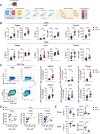

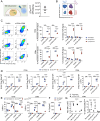
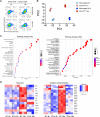
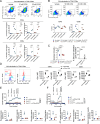
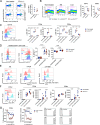
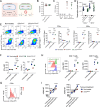
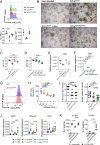

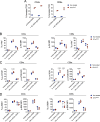



Similar articles
-
Asparagine deprivation mediated by Salmonella asparaginase causes suppression of activation-induced T cell metabolic reprogramming.J Leukoc Biol. 2016 Feb;99(2):387-98. doi: 10.1189/jlb.4A0615-252R. Epub 2015 Oct 23. J Leukoc Biol. 2016. PMID: 26497246 Free PMC article.
-
Relationship between T cell receptor clonotype and PD-1 expression of tumor-infiltrating lymphocytes in colorectal cancer.Eur J Immunol. 2020 Oct;50(10):1580-1590. doi: 10.1002/eji.201948399. Epub 2020 Jun 3. Eur J Immunol. 2020. PMID: 32441316
-
Identification of Tumoricidal TCRs from Tumor-Infiltrating Lymphocytes by Single-Cell Analysis.Cancer Immunol Res. 2018 Apr;6(4):378-388. doi: 10.1158/2326-6066.CIR-17-0489. Epub 2018 Feb 23. Cancer Immunol Res. 2018. PMID: 29475880
-
Application of genetically engineered Salmonella typhimurium for interferon-gamma-induced therapy against melanoma.Eur J Cancer. 2017 Jan;70:48-61. doi: 10.1016/j.ejca.2016.10.010. Epub 2016 Nov 22. Eur J Cancer. 2017. PMID: 27883926
-
Adoptive T cell therapy: Boosting the immune system to fight cancer.Semin Immunol. 2020 Jun;49:101437. doi: 10.1016/j.smim.2020.101437. Epub 2020 Nov 29. Semin Immunol. 2020. PMID: 33262066 Free PMC article. Review.
Cited by
-
Unlocking the potential of engineered microbes in immunotoxin-based cancer therapy.Front Microbiol. 2025 Jun 5;16:1603671. doi: 10.3389/fmicb.2025.1603671. eCollection 2025. Front Microbiol. 2025. PMID: 40539104 Free PMC article. Review.
-
Resynthesis of synthetic biology techniques: combining engineered bacteria with other antitumour therapies.Front Microbiol. 2025 Jul 28;16:1545334. doi: 10.3389/fmicb.2025.1545334. eCollection 2025. Front Microbiol. 2025. PMID: 40792261 Free PMC article. Review.
References
-
- André T, Shiu K-K, Kim TW, Jensen BV, Jensen LH, Punt C, Smith D, Garcia-Carbonero R, Benavides M, Gibbs P et al (2020) Pembrolizumab in microsatellite-instability–high advanced colorectal cancer. N. Engl J Med 383:2207–2218 - PubMed
-
- Bernal-Bayard J, Ramos-Morales F (2018) Molecular mechanisms used by Salmonella to evade the immune system. Curr Issues Mol Biol 25:133–168 - PubMed
MeSH terms
Substances
Grants and funding
LinkOut - more resources
Full Text Sources
Molecular Biology Databases

